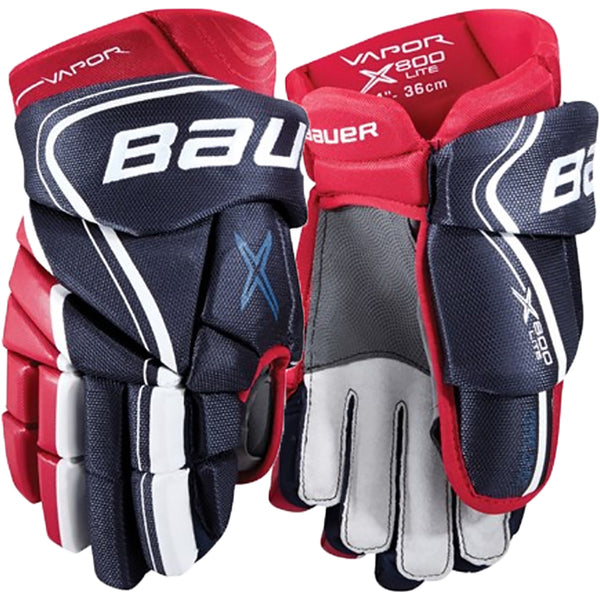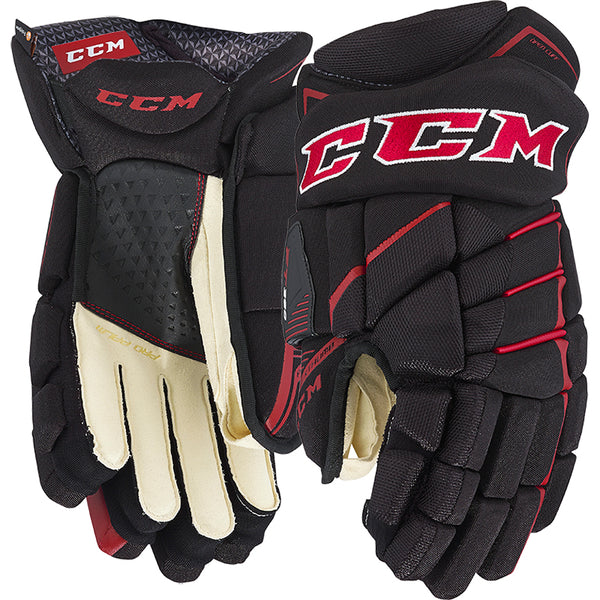
Cheap Hockey Gloves vs. Expensive Hockey Gloves: Which Ones Are Right For Me?
Hockey gloves can be one of the most consumable pieces of equipment that players use. The palms tear, the backhands split open and the pads fall out. So, does it matter how much money you spend on gloves if they're going to eventually fall apart and need to be replaced? Let's find out.
"Cheap" Gloves
Entry-level gloves average from about $50 - $70 for Senior players and about $30 - $60 for Junior and Youth players.
The palms on cheap gloves will be made of thick — but not necessarily strong — material. They will have thin, less-protective, single-density pads on the backhand and sides, as well. These gloves generally have pressed nylon logos on the cuff, which are flush with the padding and tend to rub off over time.
Gloves at this price range are a good option for beginner-level players or for players on a small budget.
"Mid-Range" Gloves
Gloves that cost about $70 - $100 for Senior players and $60 - $90 for Junior and Youth players will fall into this category. They will have a thinner palm with a secondary material (such as nash) overlay for better grip and improved durability.
The cuff logos on mid-range gloves are almost always stitched on, but still have a flat appearance. They won't rub off like the cuff logos on cheap gloves. The finger stalls have a two-piece construction to allow the fingers to bend
Mid-range gloves will have more protective double-density foams and polyethylene inserts than an entry-level glove. However, these gloves will still have room for improvement.
"Second-Tier" Gloves
Gloves that cost about $120 - $150 for Senior players and about $100 - $125 for Junior players can be considered "second-tier" gloves. This means that they will be pretty similar to "Top-of-the-Line" gloves in terms of foams, comfort and protection but with a less "high-tech" palm.
Second-tier gloves tend to have simple, sensitive, nash palms that closely resemble those of pro stock gloves used by NHLers. Occasionally, these gloves have an extra layer of material for improved grip and team color coordination.
Gloves at this price range have high-quality triple density foams and have three piece finger stalls, which allow for the fingers to bend more naturally around the stick.
The logos on the cuff are stitched and are slightly raised to give a 3D look.
"Top-of-the-Line" Gloves
Top-of-the-line gloves generally cost $160 - $210 for Senior players and $130 - $150 for Junior players. These will be the most comfortable and protective gloves in the line.
Gloves at this price range will have either double- or triple-density foams, three-piece fingers and flexible thumbs. Some gloves even have two thumb stalls for players to decide if they want a lock thumb fit, a flexible thumb fit or a combination of both.
Top-of-the-line palms will be extremely durable, as they are made of triple fiber blends with additional reinforced grip coatings. The outer materials will consist of pro-quality cable mesh with either synthetic leather or nylon.
Manufacturers will always put their trademark protective foams into the gloves' backhands at this price point. For example, top-of-the-line Bauer gloves have Poron XRD® foam, CCM gloves have D3O® foam, and Warrior gloves have Phantom foam. These foams are designed to be both extremely comfortable and protective.
The cuff logos will be stitched, beveled, and raised for a beautiful 3D look and tactile feel.
In general, the more expensive the gloves, the more comfortable, protective and durable they will be. While cheaper gloves may be more enticing because of the price tag, they will often need to be repaired or replaced much faster than a more expensive pair of gloves. Regardless of their price point, all hockey gloves will last much longer if they are properly aired out after each use!




